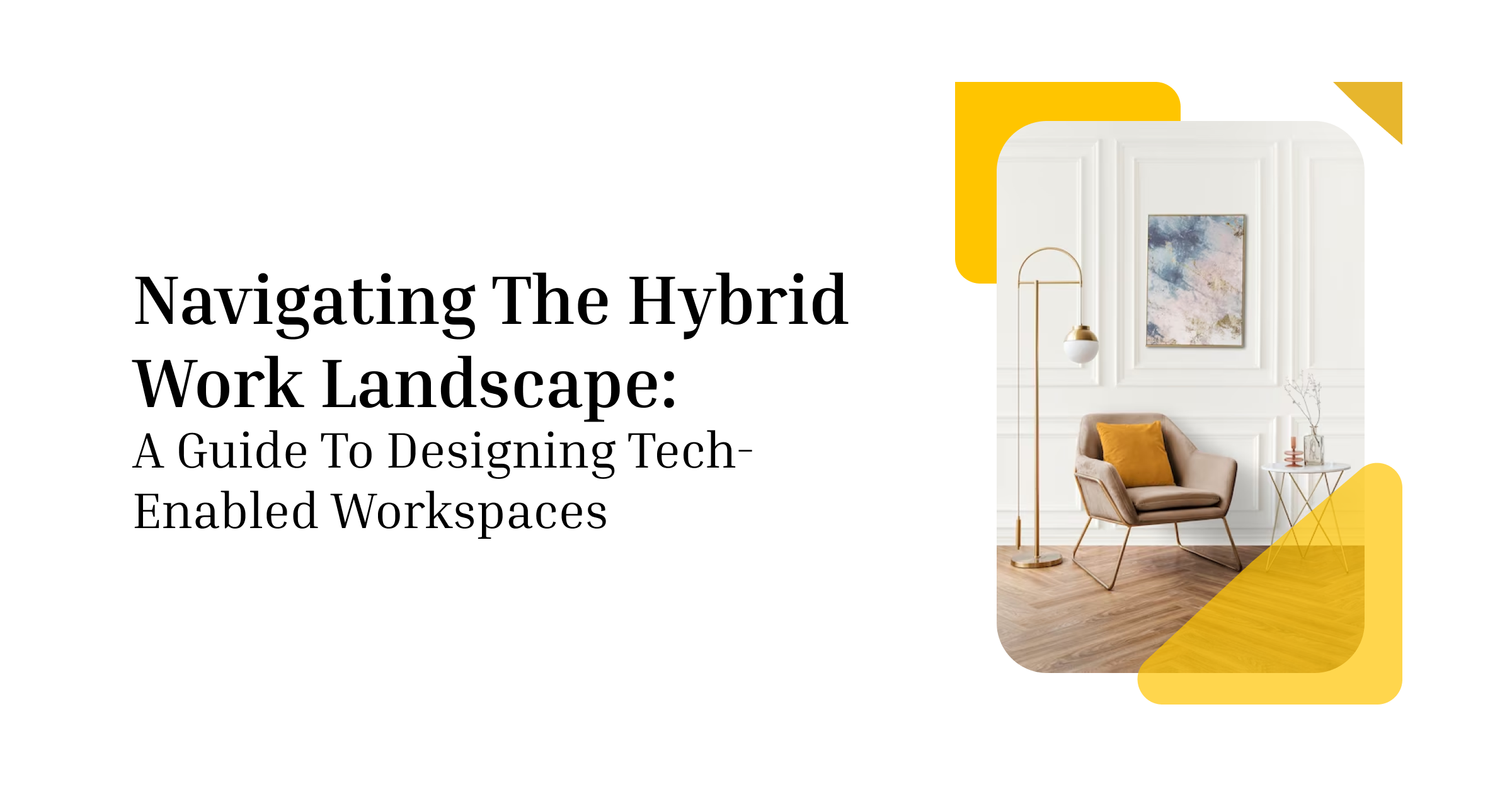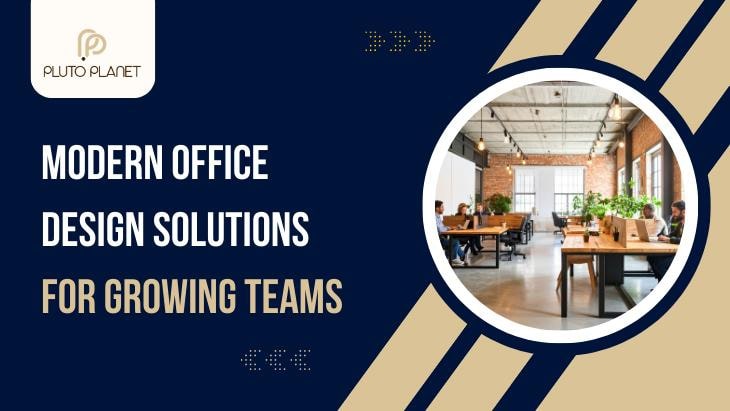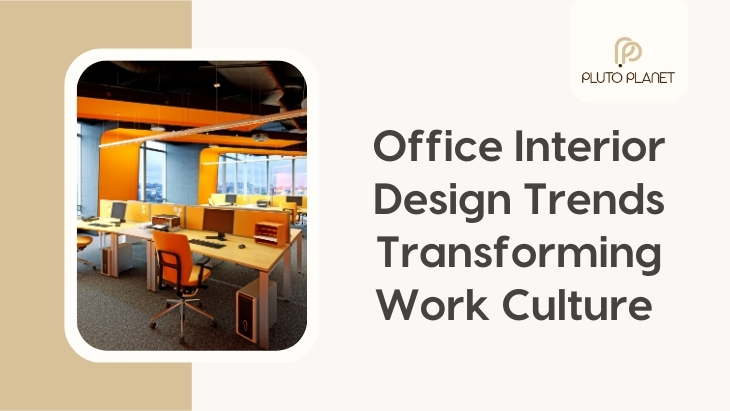In today's dynamic work environment, hybrid work is on the rise, reshaping the way we work. This article delves into the intricacies of this trend, providing valuable guidance on crafting tech-infused workspaces that harmonize the tangible and digital spheres. Discover the essentials for boosting productivity, fostering collaboration, and creating a balanced work setting that adapts to the evolving needs of modern professionals. Join us on a journey through the fusion of physical and virtual workspaces, exploring key components, addressing challenges, and envisioning a future where technology propels us toward enhanced efficiency and success.
Importance of Tech-Enabled Workspaces
Tech-enabled workspaces are becoming increasingly important in today's fast-paced digital world. These advanced work environments incorporate modern technology and software to enhance productivity and efficiency levels.
One of the key benefits of these tech-enabled workspaces is the ability to streamline communication and collaboration among team members. With the integration of digital tools such as instant messaging, video conferencing, and project management software, employees can connect and work together seamlessly, regardless of their physical location. This promotes effective teamwork, knowledge sharing, and decision-making processes.
Furthermore, tech-enabled workspaces offer efficient and automated solutions for various tasks. For example, smart office devices and Internet of Things (IoT) technology enable employees to control lighting, temperature, and other facilities with a simple voice command or through mobile apps. This creates a comfortable and personalized working environment, ultimately leading to increased employee satisfaction and productivity.
Moreover, these workspaces provide access to cloud-based storage and advanced data analysis tools, empowering employees to easily access and analyze vital information. Real-time data monitoring and analysis enable businesses to make informed decisions promptly, improving overall operational efficiency and competitiveness.
Overall, tech-enabled workspaces play a crucial role in the modern workplace by facilitating effective communication, automating tasks, and providing access to valuable information. Implementing these innovative technologies can significantly enhance productivity, collaboration, and overall success for businesses in today's digital era.
Key Components of a Tech-Enabled Workspace
A tech-enabled workspace is an environment that leverages advanced technology to optimize communication, collaboration, and productivity. It incorporates various key components that enhance efficiency and flexibility for employees, whether they work remotely or in the office.
One crucial component of a tech-enabled workspace is advanced communication tools. These tools enable seamless connectivity and information exchange among team members. They can include video conferencing platforms, instant messaging apps, and project management tools. By integrating these tools, employees can communicate effectively and stay connected, regardless of their physical location.
Another important component is cloud-based collaboration platforms. The cloud serves as the backbone of hybrid work models, allowing employees to access files and documents from any location. These platforms facilitate real-time document sharing, version control, and simultaneous collaboration, making it easier for teams to work together efficiently.
Additionally, ergonomic furniture and equipment are essential for creating a conducive physical environment. Comfortable chairs, adjustable desks, and proper lighting contribute to the well-being of employees, whether they are working from home or in the office. Ergonomic setups help reduce physical strain, improve posture, and enhance productivity.
Overall, a tech-enabled workspace incorporates advanced communication tools, cloud-based collaboration platforms, and ergonomic furniture and equipment. By integrating these components, organizations can create a flexible and productive environment that supports the needs of their hybrid workforce.
Designing a Hybrid-Friendly Office Layout
A flexible workstation setup allows for different work preferences and helps create a more comfortable and personalized work environment. This can include standing desks or adjustable seating options that cater to individual needs. By providing these options, employees can choose the setup that best suits their preferences and allows them to work in a way that is most productive for them.
Collaborative spaces are essential for promoting teamwork and encouraging spontaneous interactions among employees. By creating designated areas for brainstorming and informal discussions, companies can foster a collaborative environment where ideas can be freely shared and developed.
Integrating virtual and physical elements into the office design is crucial in today's digital age. By incorporating technology seamlessly, such as interactive screens and virtual meeting rooms, companies can create a more connected and efficient workplace. This integration allows employees to easily collaborate with colleagues both in-person and remotely, providing flexibility and enhancing productivity.
Overall, a hybrid-friendly office design should prioritize flexibility, collaboration, and the seamless integration of virtual and physical elements in order to create a dynamic and productive workspace.
Addressing Connectivity Challenges
In the dynamic landscape of hybrid work, seamless connectivity is non-negotiable. High-speed internet solutions serve as the backbone, eradicating communication barriers and fostering collaboration across virtual and physical realms. These solutions not only facilitate swift data exchange but also enhance the overall productivity of remote and in-office teams.
Security, a top priority in the digital age, is addressed through the implementation of secure Virtual Private Networks (VPNs). These VPNs create a fortified shield around data during remote work, establishing a secure virtual environment. As sensitive information traverses the digital landscape, the use of VPNs becomes instrumental in preventing unauthorized access and safeguarding the integrity of confidential data. In the intricate dance between connectivity and security, investing in high-speed internet and robust VPNs emerges as a strategic imperative for organizations navigating the complexities of the hybrid work landscape.
Employee Well-being in Hybrid Work Environments
In hybrid work environments, employee well-being is of utmost importance. One crucial aspect is maintaining a healthy work-life balance. With the blurred lines between work and personal life, it becomes more challenging to disconnect and find time for oneself. As employers, it is essential to encourage boundaries and set clear expectations to prevent burnout and stress.
Another important consideration in this context is mental health. Remote work can have various implications on employees' mental well-being. Feelings of isolation, lack of social interaction, and increased pressure to constantly be connected can take a toll on mental health. It is crucial for organizations to acknowledge these challenges and implement support systems and resources to address them. This can include providing access to mental health professionals, organizing online support groups, or promoting wellness initiatives.
By prioritizing employee well-being in hybrid work environments, organizations can ensure that their employees feel supported and valued. Ultimately, this not only improves individual productivity and job satisfaction but also contributes to a positive and inclusive work culture.
Tech Tools for Efficient Remote Collaboration
In today's remote work environment, efficient collaboration is crucial for teams to succeed. Thankfully, there are several tech tools available to facilitate remote collaboration and streamline workflows.
Virtual meetings have become essential, requiring the use of video conferencing platforms such as Zoom, Microsoft Teams, and Google Meet. These platforms allow teams to connect, communicate, and collaborate in real-time, regardless of their physical location. Team members can share screens, present documents, and make decisions together, just as they would in an office setting.
Project management tools help teams stay organized and delegate tasks effectively. Popular options like Trello and Asana offer features such as task assignment, progress tracking, and deadline reminders. These tools provide a centralized platform for team members to collaborate, update project statuses, and manage their workload efficiently.
Collaboration tools like Google Drive and Microsoft OneDrive allow teams to store, access, and edit documents in the cloud. This eliminates the need for sharing files through email and ensures that everyone is working on the latest version of a document.
Communication tools like Slack and Microsoft Teams serve as virtual office spaces where team members can chat, share files, and collaborate in dedicated channels. These tools provide a convenient way to ask quick questions, share updates, and engage in discussions, fostering real-time collaboration.
Overall, using video conferencing platforms, project management tools, collaboration platforms, and communication tools can enhance remote collaboration by enabling effective communication, organization, and task delegation. These tech tools are essential for teams to work efficiently and successfully in a remote work environment.
Security Measures for Remote Work
Remote work has become increasingly common, requiring organizations to implement robust security measures. One crucial security measure is data encryption, which entails securing sensitive information through the use of various encryption protocols. By encrypting data, even if it is intercepted or accessed by unauthorized individuals, it will be unreadable and useless to them. This approach reduces the chances of data breaches and ensures the safety of sensitive information.
Implementing two-factor authentication is another crucial security measure. This adds an additional layer of security by requiring users to provide two forms of identification before accessing sensitive data or systems. Typically, this involves a password or PIN, followed by a verification code sent to the user's mobile device. With two-factor authentication, even if an unauthorized person gains access to a user's password, they would still be unable to login without the second form of authentication.
By implementing these security measures for remote work scenarios, organizations can significantly enhance their data protection efforts. It is crucial to safeguard access points and ensure that communication channels are secure to mitigate the risks associated with remote work and prevent unauthorized access and data breaches.
Training and Onboarding for Hybrid Work
In order to effectively manage a hybrid work environment, it is crucial to provide proper training and onboarding processes for employees. This includes equipping them with the necessary skills for remote collaboration and ensuring a seamless transition into their new work arrangements.
Training programs should focus on teaching employees how to effectively utilize digital tools and navigate virtual work environments. This can include training sessions on video conferencing platforms, project management tools, and other collaboration software. By providing them with these skills, employees will be better prepared to collaborate and communicate with their colleagues, regardless of their physical location.
Additionally, revamping the onboarding process is essential for a successful transition into a hybrid work environment. Virtual orientations can be conducted to introduce new hires to the company culture, values, and expectations. Comprehensive resource kits can also be provided, including information on company policies, remote work guidelines, and access to necessary tools and resources.
By focusing on training and onboarding, organizations can ensure that employees have the skills and resources needed to thrive in a hybrid work environment. This will ultimately lead to increased productivity, collaboration, and overall success within the organization.
Monitoring and Assessing Hybrid Work Performance
In order to effectively monitor and assess performance in hybrid work setups, it is crucial to establish Key Performance Indicators (KPIs). These KPIs should focus on metrics related to productivity, collaboration, and employee satisfaction. By setting specific targets and measuring progress against these KPIs, organizations can gain valuable insights into how their hybrid work model is performing.
In addition to KPIs, implementing employee feedback mechanisms is vital for a successful hybrid work environment. Regular feedback allows employees to share their experiences, concerns, and suggestions for improvement. This feedback can be collected through surveys, one-on-one meetings, or suggestion boxes, promoting open and transparent communication within the organization.
By fostering a culture of continuous improvement through frequent feedback, organizations can ensure that they are addressing any challenges or areas of improvement in their hybrid work model. This not only helps in monitoring and assessing performance but also creates a sense of ownership and engagement among employees, leading to improved overall productivity and satisfaction.
Overall, monitoring and assessing hybrid work performance requires the establishment of KPIs and implementing feedback mechanisms to consistently evaluate and enhance the hybrid work model's effectiveness.
Overcoming Common Challenges
In order to overcome communication gaps, it is important to promote open dialogue within a team or organization. This can be achieved by encouraging team members to share their thoughts, ideas, and concerns openly and honestly. Having regular check-ins, whether through virtual meetings or informal conversations, can help maintain connectivity and ensure that everyone feels heard and included.
To address isolation concerns, it is crucial to create a sense of community within the team. This can be done by organizing virtual team-building activities that encourage collaboration and interaction among team members. These activities can range from virtual games or challenges to online workshops or training sessions.
Additionally, utilizing online platforms, such as chat groups or social media channels, can help foster a sense of community and provide a space for team members to connect and support each other. Encouraging team members to share their experiences, challenges, and achievements on these platforms can help them feel more connected and less isolated.
Overall, by promoting open dialogue and providing diverse communication channels, as well as organizing virtual team-building activities and fostering a sense of community through online platforms, organizations can overcome common challenges related to communication gaps and isolation.
Future Trends in Hybrid Workspaces
The future of hybrid workspaces is greatly influenced by emerging trends such as the integration of virtual reality (VR) and the use of artificial intelligence (AI) to enhance productivity and efficiency.
Virtual reality has the potential to transform the way teams interact and collaborate in hybrid work environments. With VR technology, virtual team-building exercises and meetings can be conducted in immersive environments, creating a sense of presence and connection among remote team members. Additionally, VR can be utilized for training programs, allowing employees to engage in realistic simulations and practice real-life scenarios.
Artificial intelligence is another crucial trend shaping hybrid workspaces. AI-driven workplace enhancements include automated task management systems that can streamline workflows and eliminate repetitive manual tasks. Furthermore, AI can analyze large amounts of data to provide valuable insights and predictions, enabling businesses to make informed decisions quickly and efficiently.
Overall, these trends indicate that the future of hybrid workspaces will be characterized by the integration of advanced technologies like virtual reality and artificial intelligence. By embracing these technologies, businesses can create a more engaging, efficient, and productive work environment for their employees.
How Pluto Planet is Designing Tech-Enabled Workspaces?
Pluto Planet Inc., a leading design firm, is revolutionizing the way perceive and utilize workspaces in the modern era by incorporating technology-enabled solutions. With a focus on enhancing productivity, collaboration, and employee well-being, Pluto Planet is at the forefront of designing innovative and intelligent work environments.
By integrating cutting-edge technologies such as smart lighting, automated temperature control, and IoT systems, Pluto Planet creates workspaces that can be dynamically adjusted to suit individual preferences. The use of sensors and data analytics allows for real-time monitoring and optimization of energy usage, promoting sustainability and cost-efficiency.
Additionally, Pluto Planet recognizes the importance of fostering creativity and collaboration among employees. By incorporating state-of-the-art audiovisual systems, interactive displays, and virtual reality technology, they create immersive and engaging spaces that inspire innovation and teamwork.
Furthermore, Pluto Planet places emphasis on employee well-being and productivity. They incorporate ergonomic furniture, adjustable standing desks, and noise-cancellation technologies to create comfortable and healthier work environments. Additionally, they integrate wellness platforms and smart fitness equipment to encourage employees to prioritize their health and well-being.
Overall, Pluto Planet is spearheading the design of tech-enabled workspaces that promote productivity, collaboration, and employee well-being. By seamlessly integrating technology into the workplace, they are creating environments that cater to the needs of the modern workforce, ultimately enhancing both individual and organizational performance.
Conclusion
In conclusion, adapting to the hybrid work landscape necessitates a deliberate integration of technology, design, and a deep comprehension of employee requirements. By establishing workspaces infused with technology, organizations can embrace and thrive in the future of work, enabling their teams to achieve success. This involves creating an environment that supports and empowers employees to navigate the complexities of working in both physical and virtual spaces. With the right blend of technology and thoughtful design, organizations can foster collaboration, productivity, and employee well-being, ensuring that they remain competitive in the ever-evolving work landscape.
FAQs
Q1. Is it essential for every employee to have a dedicated home office space for remote work?
Addressing the common misconception about the necessity of a dedicated home office.
Q2. How can companies ensure data security during remote work?
Exploring practical measures and best practices for maintaining data security in a remote work environment.
Q3. What role does employee training play in the success of hybrid work models?
Understanding the significance of ongoing training and skill development in a hybrid work setting.
Q4. Are there specific challenges associated with managing remote teams?
Delving into the challenges managers face when overseeing remote teams and strategies to overcome them.
Q5. What are the potential drawbacks of a poorly designed hybrid work model?
Identifying the risks and consequences of inadequately implementing hybrid work practices.









Leave a reply